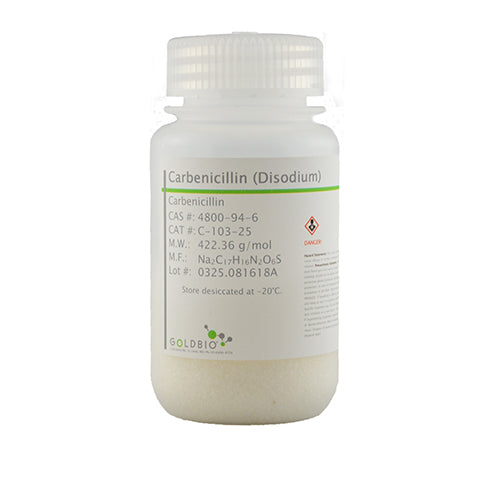Description
Carbenicillin is a member of the penicillin β-lactam antibiotics. However, unlike most β-lactams, carbenicillin disodium is limited to primarily gram-negative bacteria including Pseudomonas aeruginosa and common enteric species. It can be used in selection protocols and is often preferred over ampicillin due to its increased stability. This allows for less contamination of unwanted bacterial colonies. In addition, carbenicillin has been used to regulate bacterial growth in plants, yielding low regeneration frequencies. It can be used in genetic transformation applications to select for AmpR transformed cells.
Penicillins are a type of β-lactam antibiotic consisting of a four-membered β-lactam ring bound to a five-membered thiazolidine ring. This two-ring system causes distortion of the β-lactam amide bond, resulting in decreased resonance stabilization and increased reactivity. β-lactams inhibit the formation of peptidoglycan cross-links within bacterial cell walls by targeting penicillin-binding proteins or PBPs. Consequently, the bacterial cell wall becomes weak and cytolysis occurs. Resistance to β-lactam antibiotics occurs in the presence of cells containing plasmid encoded extended spectrum β-lactamases or ESBLs.
Product Specifications:
Carbenicillin Disodium in H2O
(100 mg/mL Pre-Made Solution, 0.2 µm Sterile Filtered)
Details
| CAS NUMBER | |
| CHEMICAL GRADE | |
| EXTERNAL URL | Click here |
| UNSPSC CODE |





